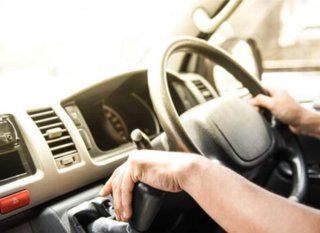Around 10 people are killed and 50 seriously injured in drink drive crashes every week.
It is not just the drivers who have been drinking who suffer, but often their passengers, people in other vehicles, pedestrians, cyclists or motorcyclists, and the families of everyone involved.
The legal drink drive limit is 80mg of alcohol per 100ml of blood. Drivers with a blood alcohol concentration between 50 and 80mg per 100ml of blood are two to two-and-a-half times more likely to crash and six times more likely to be in a fatal crash.
The risk increases massively when over the limit. A driver who is double the legal limit is 50 times more likely to be in a fatal crash.
Every year, about 90,000 people are convicted of drinking and driving, and face a driving ban of at least 12 months, a large fine and possible imprisonment.
It is also an offence to be unfit to drive through drink or drugs, even if below the legal limit – the penalties are same as for the 'over the limit' offence.
Impact on driving ability
Alcohol impairs judgement, making drivers over-confident and more likely to take risks. It slows their reactions, increases stopping distances, impairs judgement of speed and distance and affects vision.
Even a small amount, well below the legal limit, seriously affects the ability to drive safely.
Alcohol is absorbed into the bloodstream very quickly, but it takes about an hour for one unit to be removed by a healthy liver.
The exact number of units of alcohol in a drink depends on its size and alcoholic strength by volume (abv).
For example, a 175ml glass of wine of 12%abv would be 2.1 units, and a 250ml glass of the same wine would be three units.
Drinkers cannot be sure how much alcohol they are consuming because the alcoholic strength of drinks varies enormously, as does the size of measures.
In pubs, bars and restaurants a glass of wine could be 175ml or 250ml, bottles and cans are different sizes and spirits could be 25ml or 35ml measures.
Drinks poured at home are usually larger than ones bought in a pub or restaurant. It is also difficult to know the alcoholic strength of a drink without seeing the bottle.
The speed with which alcohol is absorbed into the bloodstream also varies depending on a person’s size, age, weight and gender and whether they have eaten.
The same amount of alcohol will give different blood alcohol levels in different people.
It is impossible to accurately calculate how much alcohol is in your body, and whether you are above or below the drink drive limit.
Many drink drivers are caught the morning after they have been drinking.
As it takes several hours for alcohol to disappear from the body, someone who was drinking late the previous evening could easily still be over the limit on their way to work the next morning.
Even if under the limit, they may still be affected by the alcohol in their body, or its aftermath – the hangover.
Medicines and Drugs
Driving while unfit through drugs, whether illegal or prescribed or over-the-counter medicines, is an offence that carries the same penalties as drink driving.
The Police can, and do, conduct roadside tests to assess whether a driver is impaired.
Around 18% of people killed in road crashes have traces of illegal drugs in their blood, with cannabis being the most common.
Drugs can affect a driver’s behaviour and body in a variety of ways (depending on the drug).
These can include:
- Slower reactions
- Poor concentration and confused thinking
- Distorted perception
- Over confidence, resulting in taking unnecessary risks
- Poor co-ordination
- Erratic behaviour
- Aggression, panic attacks or paranoia
- Blurred vision
- Tremors, dizziness, cramps
- Severe fatigue after use
The effects can last for hours or even days, and vary from person to person. They can be difficult for an individual to detect.
It is difficult to predict whether a particular medicine will affect a person’s ability to drive safely, and if so, how and for how long.
A driver may not even notice that they have been impaired until it is too late.
The effects depend on how much, how often and how a medicine is used, plus the psychological and physical attributes of the person taking it.
Some medicines may cause:
- Drowsiness
- Dizziness or feeling light-headed
- Difficulty concentrating
- Feeling edgy, angry or aggressive
- Feeling nauseous or otherwise unwell
- Reduced coordination, including shaking
- Feeling unstable
A person’s driving ability can also be affected by the medical condition for which they are taking the medicine.
Many over-the-counter medicines, including remedies for coughs, colds, flu and hay fever, cause unwanted drowsiness which might impair driving.
Warnings about drowsiness are not always clear so, for example, if the label says "may cause drowsiness", assume that it will do so.
- For a sample drink and drugs policy, go to the Driver Management section of Fleet Operations.
Source: RoSPA





















Login to comment
Comments
No comments have been made yet.